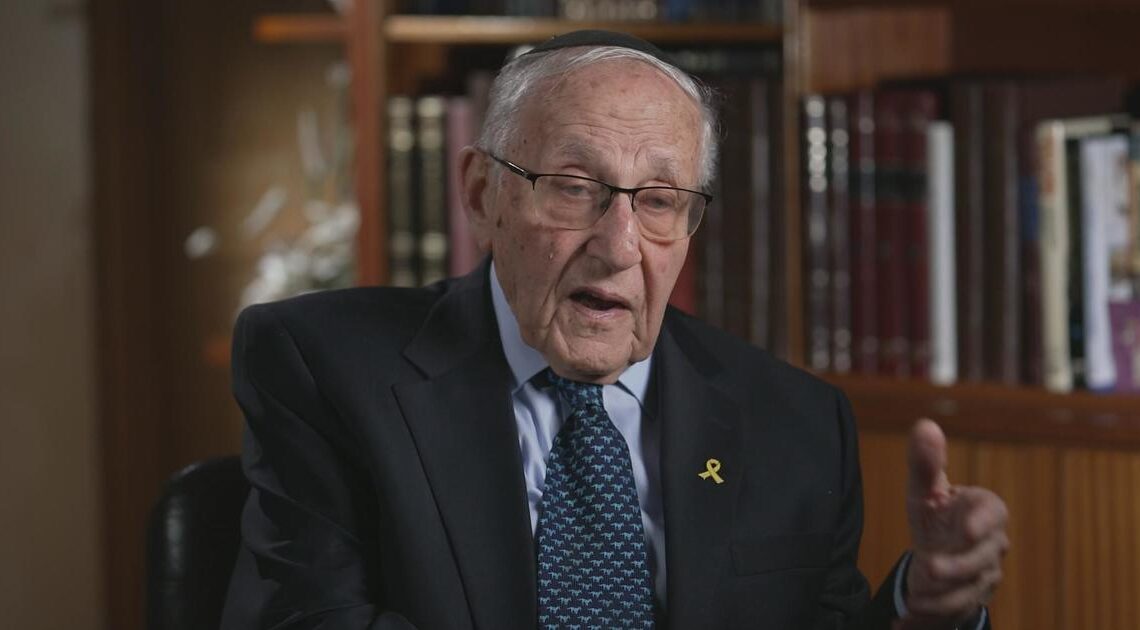During the Holocaust, Manfred Goldberg survived confinement in the Riga, Latvia ghetto and four concentration camps before he witnessed a bombing in Germany that took the lives of thousands of prisoners.
On May 3, 1945, just days before the end of World War II in Europe, British Royal Air Force planes mistakenly attacked the Cap Arcona ocean liner in Lübeck Bay in the Baltic Sea. The ship was crammed with thousands of concentration camp prisoners.
As the planes struck, Goldberg was at a nearby German naval base, lined up under SS guard with other prisoners.
“And it is while we stood there that we witnessed bombers and fighter planes coming along,” Goldberg said.
He remembers seeing the planes drop ordnance and hearing detonations.
“There were some pretty powerful explosions, and there were quite a few,” Goldberg said.
Before the war
Before World War II, the Cap Arcona was a German cruise ship for the well-to-do. For more than a decade after its 1927 launch, the ocean liner transported well-heeled passengers from Europe to South America in just two weeks. The ship had many luxuries, including a tennis court, a heated swimming pool and a restaurant with an ocean view, historian Bill Niven said.
The cruise ship traversed the Atlantic dozens of times. On one of its last trips before the war, the ocean liner carried some German Jewish passengers who had bought tickets to safety in South America.
In 1939, as German troops invaded Poland, the Nazis commandeered the Cap Arcona. It was repurposed into a floating barracks in the Baltic.
Who were the prisoners sent to the Cap Arcona
In 1945, as Allied forces closed in, the rusted and battered Cap Arcona was repositioned to the Nazi holdout at Lübeck Bay. At the same time, SS Chief Heinrich Himmler ordered the evacuation of concentration camps.
“I think the main concern was to get rid of evidence because prisoners are evidence,” Niven said. “They can talk. They can tell. They can speak to those atrocities that were committed by the Nazis. So getting rid of the evidence meant getting rid of human beings.”
Thousands of prisoners — Jews, Americans, Greeks and Italians among them — were sent to Lübeck Bay. The Cap Arcona arrived on April 14, 1945, two weeks before Nazi leader Adolf Hitler killed himself and three weeks before the end of the war in Europe. It was anchored about 2 miles offshore. With its engines barely running and little in the…
Click Here to Read the Full Original Article at Home – CBSNews.com…

